Counsellor of State

Counsellors of State are senior members of the British royal family to whom the monarch can delegate and revoke royal functions through letters patent under the Great Seal, to prevent delay or difficulty in the dispatch of public business in the case of their illness (except total incapacity) or of their intended or actual absence from the United Kingdom.[1]
Counsellors of state may carry out "such of the royal functions as may be specified in the Letters Patent".[1] In practice, this means most of the monarch's official duties, such as attending Privy Council meetings, signing routine documents and receiving the credentials of new ambassadors to the Court of St James's.[2] However, by law, counsellors of state cannot grant ranks, titles or peerages.[1] They also, by the terms of the letters patent, cannot deal with a number of core constitutional functions, such as Commonwealth matters, the dissolution of Parliament (except on the monarch's express instruction) and the appointment of prime ministers.[2] A rare example occurred on 7 February 1974 of the Proclamation of the Dissolution of Parliament being promulgated by Queen Elizabeth The Queen Mother and Princess Margaret as counsellors of state, on the express instructions of Queen Elizabeth II.[3]
Royal functions are to be exercised jointly by the counsellors of state or by such number of them as is specified in the letters patent under the Great Seal and subject to any other conditions within.[4] However, there is a legal presumption that counsellors of state should act jointly and, as such, at least two are needed to act, with the absence of one possibly risking a legal challenge.[5]
Counsellors of state are the monarch's spouse and the next four people in the line of succession who meet the following specifications: they must be British subjects of full age (21 years, or 18 years for the heir apparent and presumptive) who are domiciled in the United Kingdom and not disqualified from becoming monarch.[6][7] During a regency, the next four eligible people in the line of succession after the regent (and the regent's spouse) may be counsellors.[8]
History
The first counsellors of state were created in 1911 by an Order in Council of George V, and this process was repeated on each occasion of the King's absence or incapacity.[citation needed]
A rule for all future reigns, however, was established by the Regency Act 1937.[2]
Since the passage of the Regency Act 1937, the only persons to have been counsellors of state while not a queen consort, prince, or princess were George Lascelles, 7th Earl of Harewood; Alastair Windsor, 2nd Duke of Connaught and Strathearn (although Windsor had been a prince between 1914 and 1917 and never served in practice during his short tenure); and Maud Carnegie, Countess of Southesk (who was entitled to, but did not use the style of princess).[citation needed] Prior to that, the Lord Chancellor, the Lord President of the Council, the prime minister, and the Archbishop of Canterbury had been appointed to the position by George V.[citation needed]
Queen Elizabeth The Queen Mother lost her eligibility to be a counsellor of state in 1952 upon the death of her husband, King George VI. Section 3 of the Regency Act 1953, however, restored her position. The provision was specific to her, rather than applying to dowager consorts generally, and became moot upon her death in 2002.
Counsellors of state were last appointed for the 2022 State Opening of Parliament.[9][10]
In September 2022, The Daily Telegraph reported that King Charles III wanted the law to be amended to allow only working members of the royal family to serve as counsellors of state. This would take away the eligibility of family members that do not carry out official functions, while creating a possibility for spouses to senior ranking members and those with a lower position in the line of succession to be called upon and fulfil the role.[11]
Questions were raised in the House of Lords in October 2022 by Lord Stansgate about the "suitability" of having the Duke of York and Duke of Sussex as counsellors of state when the former had "left public life" and the latter had "left the country". It was subsequently reported that instead of removing the dukes from the list of counsellors of state, it was being proposed that the pool of counsellors be expanded, possibly to include Princess Anne and Prince Edward in order to create a more flexible list of available royals to stand-in for the king, if needed. Changes to the Regency Act were anticipated to be tabled in time to accommodate overseas trips being planned for 2023 by both King Charles and Queen Camilla and the Prince and Princess of Wales.[12]
List of current counsellors of state
As of 8 September 2022, those eligible to be appointed counsellors of state to Charles III are:
| Counsellor | Since | Relation to Monarch | Succession order | Change |
|---|---|---|---|---|
 Queen Camilla |
8 September 2022 | Spouse | N/A | Accession to the throne of Charles III |
 William, Prince of Wales |
21 June 2003 | Son and Heir-apparent | First | Reached the age of 21 |
 Prince Harry, Duke of Sussex |
15 September 2005 | Son | Fifth | |
 Prince Andrew, Duke of York |
19 February 1981 | Brother | Eighth | |
 Princess Beatrice |
8 September 2022 | Niece | Ninth | Accession to the throne of Charles III |
Of these five, only Queen Camilla, Prince William and occasionally Princess Beatrice perform royal duties. If Prince Harry ceases to be domiciled in the United Kingdom, he shall become ineligible to be a counsellor of state.[5] In February 2022 however, Prince Harry renewed his lease on Frogmore Cottage in the UK, meaning he continues to be domiciled there.[13] Prince Andrew remains eligible to serve after withdrawing from most royal activities; this provoked backlash due to the allegations of sexual abuse made against him.[14][15] Should any of the above, other than the Queen Consort, become ineligible or unable to serve, the next persons eligible would be Princess Eugenie and then Prince Edward, Earl of Wessex and Forfar. In October 2022, Labour peer the 3rd Viscount Stansgate called into question Andrew and Harry's ability to serve as counsellors of states in the House of Lords, as one had "left public life" and the other had "left the country".[12] An amendment to the Regency Act is expected to take place, to make the list of eligible individuals more flexible.[12]
List of former counsellors of state
The following is a list of all the people who were once eligible to be a counsellor of state, listed in chronological order:
George VI (11 December 1936 – 6 February 1952) | ||||
| Counsellor | Period | Relation to Monarch | Change | |
|---|---|---|---|---|
 Queen Elizabeth |
19 March 1937 – 6 February 1952 |
Spouse | Passage of the Regency Act 1937 | |
 Prince Henry, Duke of Gloucester |
19 March 1937 – 10 June 1974 |
Brother | ||
 Prince George, Duke of Kent |
19 March 1937 – 25 August 1942 |
Brother | ||
 Mary, Princess Royal |
19 March 1937 – 25 December 1957 |
Sister | ||
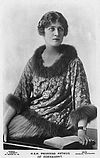 Princess Arthur of Connaught, Duchess of Fife |
19 March 1937 – 21 April 1944 |
Cousin | ||
Alastair Windsor, Duke of Connaught and Strathearn Never served |
25 August 1942 – 26 April 1943 |
First cousin once removed |
Replaced Prince George, Duke of Kent upon his death | |
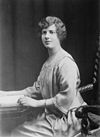 Maud Carnegie, Countess of Southesk |
26 April 1943 – 7 February 1944 |
Cousin | Replaced Alastair Windsor, Duke of Connaught upon his death | |
George Lascelles, Earl of Harewood (Viscount Lascelles until 1947) |
7 February 1944 – 21 August 1951 |
Nephew | Replaced Maud Carnegie, Countess of Southesk upon reaching the age of 21 | |
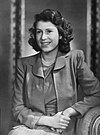 Princess Elizabeth, Duchess of Edinburgh |
21 April 1944 – 6 February 1952 |
Daughter (Heir-presumptive) | Replaced Princess Arthur of Connaught, Duchess of Fife upon reaching the age of 18 | |
 Princess Margaret |
21 August 1951 – 10 March 1985 |
Daughter | Replaced George Lascelles, Earl of Harewood upon reaching the age of 21 | |
Elizabeth II (6 February 1952 – 8 September 2022) | ||||
| Counsellor | Period | Relation to Monarch | Change | |
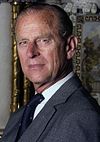 Prince Philip, Duke of Edinburgh |
6 February 1952 – 9 April 2021 |
Spouse | Accession to the throne of Elizabeth II | |
 Princess Margaret (Countess of Snowdon from 1961) |
21 August 1951 – 10 March 1985 |
Sister | Already eligible | |
 Prince Henry, Duke of Gloucester |
19 March 1937 – 10 June 1974 |
Uncle | ||
 Mary, Princess Royal |
19 March 1937 – 25 December 1957 |
Aunt | ||
George Lascelles, Earl of Harewood |
6 February 1952 – 9 October 1956 |
Cousin | Accession to the throne of Elizabeth II | |
 Queen Elizabeth The Queen Mother |
19 November 1953 – 30 March 2002[16] |
Mother | Passage of the Regency Act 1953 | |
 Prince Edward, Duke of Kent |
9 October 1956 – 26 August 1965 |
Cousin | Replaced George Lascelles, Earl of Harewood upon reaching the age of 21 | |
 Princess Alexandra of Kent |
25 December 1957 – 18 December 1962 |
Cousin | Replaced Mary, Princess Royal upon reaching the age of 21 | |
 Prince William of Gloucester |
18 December 1962 – 15 August 1971 |
Cousin | Replaced Princess Alexandra of Kent upon reaching the age of 21 | |
 Prince Richard of Gloucester |
26 August 1965 – 14 November 1966 |
Cousin | Replaced Prince Edward, Duke of Kent upon reaching the age of 21 | |
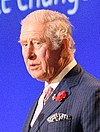 Charles, Prince of Wales |
14 November 1966 – 8 September 2022 |
Son (Heir-apparent) |
Replaced Prince Richard of Gloucester upon reaching the age of 18 | |
 Princess Anne (Princess Royal from 1987) |
15 August 1971 – 21 June 2003 |
Daughter | Replaced Prince William of Gloucester upon reaching the age of 21 | |
 Prince Richard, Duke of Gloucester |
10 June 1974 – 19 February 1981 |
Cousin | Replaced Prince Henry, Duke of Gloucester upon his death | |
 Prince Andrew (Duke of York from 1986) |
19 February 1981 – 8 September 2022 |
Son | Replaced Prince Richard, Duke of Gloucester upon reaching the age of 21 | |
 Prince Edward (Earl of Wessex from 1999) |
10 March 1985 – 15 September 2005 |
Son | Replaced Princess Margaret, Countess of Snowdon upon reaching the age of 21 | |
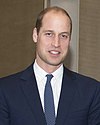 Prince William (Duke of Cambridge from 2011) |
21 June 2003 – 8 September 2022 |
Grandson | Replaced Anne, Princess Royal upon reaching the age of 21 | |
 Prince Harry (Duke of Sussex from 2018) |
15 September 2005 – 8 September 2022 |
Grandson | Replaced Prince Edward, Earl of Wessex upon reaching the age of 21 | |
Timeline

References
- ^ a b c Regency Act 1937, s 6(1).
- ^ a b c "Counsellors of State". royal.uk. 7 January 2016. Archived from the original on 2017-04-22. Retrieved 30 August 2021.
- ^ London Gazette no. 46205, 8 February 1974, pp. 1851–1852
- ^ Regency Act 1937, s 6.
- ^ a b Prescott, Craig (21 January 2020). "Harry and Meghan, Regency, Counsellors of State and a "Slimmed Down" Royal Family". UK Constitutional Law Association. Archived from the original on 2020-02-06. Retrieved 30 August 2021.
- ^ Regency Act 1937, s 6(2) and 3(2).
- ^ Velde, François (29 April 2007). "Regency Acts 1937 to 1953". Heraldica. Archived from the original on 2001-04-27. Retrieved 30 August 2021.
- ^ Section 6(4).
- ^ "Queen hands over to Charles and William for State Opening". BBC. 9 May 2022. Retrieved 10 May 2022.
- ^ "Warrant to prepare letters patent for the delegation of functions to Counsellors of State for opening the session of Parliament on 10 May 2022". Crown Office. Retrieved 17 August 2022.
- ^ Ward, Victoria; Malnick, Edward (17 September 2022). "King Charles seeks to amend law on who can act as his official stand-in". The Telegraph. Retrieved 17 September 2022.
- ^ a b c Coughlan, Sean (26 October 2022). "More stand-ins for King, but Prince Andrew and Prince Harry stay". BBC News. Retrieved 26 October 2022.
- ^ "Prince Harry will renew Frogmore Cottage lease to keep serving Queen" in The Telegraph, 19 February 2022
- ^ "Prince Andrew to remain counsellor of state after settling sexual abuse lawsuit". TheGuardian.com. 16 February 2022.
- ^ Meighan, Craig (14 September 2022). "Anger over Prince Andrew's Earl of Inverness title amid Counsellor of State backlash". The National. Newsquest. Archived from the original on 14 September 2022. Retrieved 14 September 2022.
- ^ Queen Elizabeth lost her position as counsellor of state when she was widowed. However, the Regency Act 1953 added her as a counsellor of state.
Bibliography
- Velde, François R. (2004). Regency Acts 1937 to 1953. Retrieved 2005.
External links
- Text of the Regency Act 1937 as in force today (including any amendments) within the United Kingdom, from legislation.gov.uk.
